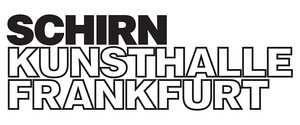October 11, 2019–January 12, 2020
Römerberg
60311 Frankfurt am Main
Germany
T +49 69 2998820
welcome@schirn.de
www.schirn.de/en/magazin/
www.schirn.de/en/digitorial/
Facebook / Twitter / YouTube / Instagram / Pinterest / #LeeKrasner / #MeetLeeKrasner / #Schirn
The artist Lee Krasner (1908–1984) is a pioneer of Abstract Expressionism in the United States. For the first time in more than 50 years, her work will be on view in a major European retrospective. The Schirn Kunsthalle Frankfurt will tell the story of one of the most remarkable artists of the twentieth century, presenting works from across Krasner’s entire oeuvre, which spans more than half a century: self-portraits from the late 1920s, charcoal life drawings, groups of works such as her renowned Little Images from the 1940s and her Prophecy series from the 1950s, along with works from her Umber and Primary series from the 1960s and late collages from the 1970s.
Dr. Philipp Demandt, Director of the Schirn Kunsthalle Frankfurt, comments: “Lee Krasner is one of the most important painters of American postwar modernism, and yet for a long time her work was not afforded the attention it deserves. It is surprising that our exhibition is her first retrospective in Europe in over fifty years. Still the art of Abstract Expressionism is often regarded as being primarily a male preserve, and with this tribute to Lee Krasner it is being subjected to a reassessment that is long overdue. For our audience, the show at the Schirn will provide a unique opportunity to experience the artist’s works in the flesh, because few of her large-format works are preserved in European collections.”
Driven by a great sense of purpose, Krasner took art lessons even during her time in high school, went on to study at the Cooper Union, the National Academy of Design and the Hans Hofmann School of Fine Arts. She was an active member of the association American Abstract Artists and cultivated friendships with Ray Eames, Arshile Gorky and Willem de Kooning. In New York in the 1940s, she was part of the epicenter of the movement that would become known as Abstract Expressionism or New York School together with artists such as Stuart Davis, Mark Rothko, Barnett Newman and Jackson Pollock. After the Second World War, this young generation of artists sought a new pictorial language through different artistic approaches. For a long time, Lee Krasner’s work was overshadowed by that of her husband Jackson Pollock, who was one of the main representatives of Action Painting and known for his “dripping” technique. After Pollock’s early death in 1956, Krasner decided to use his studio as her own, initiating a new phase of her artistic career. She was able to work on large, unstretched canvases for the first time, producing some of her most important artworks. Unlike other artists of the time who also painted in a non-representational manner, Krasner never developed a “signature style,” but instead aspired to constantly reinvent her pictorial language.
Eleanor Nairne, Barbican Art Gallery, London, and Dr. Ilka Voermann, Schirn Kunsthalle Frankfurt, the curators of the exhibition, observe: “Lee Krasner worked in cycles, frequently referring back to earlier periods and developing new artistic forms of expression. With remarkable energy and freedom she always remained true to her own spirit. Our exhibition celebrates Krasner’s artistic versatility by demonstrating the multifaceted nature of her art as well as her significant contributions to the Abstract Expressionist movement.”
The Schirn has been able to secure loans from a large number of international museums and public and private collections. Many of Krasner’s works will be on view for the first time in Germany.
The exhibition Lee Krasner is curated and organized by the Barbican Centre, London, in cooperation with the Schirn Kunsthalle Frankfurt, the Zentrum Paul Klee, Bern, and the Guggenheim, Bilbao.
It has been made possible through the support of the Art Mentor Foundation Lucerne. Additional support for the exhibition has been provided by the Terra Foundation for American Art.
A catalog edited by Eleanor Nairne and Ilka Voermann has been published in an English and a German edition, with texts by Eleanor Nairne, Katy Siegel, John Yau, Suzanne Hudson, and a previously unpublished interview with Lee Krasner by Gail Levin.
The Schirn offers a free digital tutorial guide, the Digitorial®, which is available online here.
Director: Dr. Philipp Demandt
Curators: Eleanor Nairne, Barbican Art Gallery, London, and Dr. Ilka Voermann, Schirn Kunsthalle Frankfurt
Press contact: Johanna Pulz (Head of Press/Public Relations):
presse@schirn.de / T (+49 69) 29 98 82 148
Press material: www.schirn.de/en (texts, images, and films for download under PRESS)



